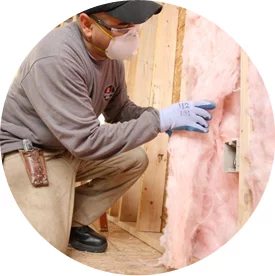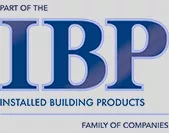Frequently Asked Questions
Have questions about insulation that you need to clear up? Below, we’ve listed common questions, which we hope will help you out. If you can’t find the answer to your question, don’t hesitate to contact us!
Insulation
What are the insulation materials I can use?
Fiberglass and cellulose insulation are commonly used, but there are different types available, such as:
- Spray foam
- Rigid board / foam board
- Radiant barrier
- Rolls and batts
How does insulation work?
Insulation works by resisting heat flow, which increases your home’s energy efficiency and helps reduce your monthly bills. How it stops heat transfer depends on the type of insulation – for instance, radiant barrier, which is installed in attics, reflects the energy from the sun, while fiberglass traps warm air.
How much insulation should I install?
There are several factors that will determine how much insulation you need, including:
- Age of your home (generally, homes built before the 1970s need more insulation)
- Climate zone you live in (click here to see a zone map – Chicago is in zone 5)
- Type of heating and cooling system you have
- Areas of your home you need to insulate
A professional insulation company can also help you determine where you need to insulate and which type(s) of insulation would be the most suitable!
How do I know where I need to insulate?
For specifics about your home (for instance, you may have enough insulation in your walls but need more in the attic), it’s best to talk to an insulation company. On a more general note, you should insulate:
- Attic
- Basement
- Crawl spaces, if your home has any
- Walls
- Floors
- Ceilings
- Garage doors
- Around piping, ductwork, etc.
What is R-value?
If you’ve ever talked to an insulation contractor, you’ve undoubtedly heard the term “R-value.” Basically, the R-value of a certain type of insulation refers to how effective it is at stopping heat transfer! The R-value depends on the material, thickness, and density of the insulation, and of course, installation (improperly installed insulation is almost like having no insulation at all!).
What are the benefits of insulation?
Insulation does more than just improve your home’s energy efficiency and reduce your energy bills. It can:
- Make your home more comfortable no matter what time of year it is
- Reduce outside noises, as well as noises from different levels and rooms of your home
- Help increase the overall efficiency of your air conditioner
- Add higher resale value to your home
- Help decrease or eliminate air infiltration
- Reduce your carbon footprint
How does insulation reduce noise?
Limiting the transmission of sound from one area to another requires a material that encloses the source of the noise, forming a barrier between the source and the adjacent area. This is what insulation does! Fiberglass and cellulose are the best types of insulation for soundproofing purposes.
How do I know if I need to re-insulate?
As we mentioned, if your home was built in the ’70s or before, you probably need more insulation. However, there are other signs that indicate you may need to re-insulate your home:
- Energy bills that are higher than normal
- Uncomfortable drafts
- Uneven temperatures from room to room
- AC running more than usual in the summer
- Ice dams in the winter
Learn more»
Why is cellulose considered environmentally friendly insulation?
Cellulose insulation is considered one of the most environmentally friendly types of insulation available. It takes less energy to make than other materials.
It is also made mostly of recycled paper (mostly newspaper), which typically comes from community recycling programs. Otherwise, this paper might end up in landfills and release greenhouse gases as it is decomposed. If you used the paper put into landfills each year to make cellulose insulation, it would save about eight million tons of CO2 emissions.
Learn more from CIMA.
How is new construction insulation different than re-insulation solutions?
New construction or new build insulation is installed during construction of a home, whereas existing home insulation, retrofit insulation or home remodeling insulation, is installed in a home that has already been built.
What is blanket insulation?
Blanket insulation can be made up of rolls or batts, and it’s one of the most commonly used types of insulation. It is mainly installed in spaces that are relatively free from obstructions.
What is retrofit insulation?
Retrofit insulation refers to re-insulating an existing home. You can retrofit a home with any of the materials you would use in a new construction insulation project—fiberglass, cellulose, spray foam or radiant barrier insulation.
What is the best insulation for soundproofing?
Loose-fill cellulose and fiberglass are the best insulation materials for soundproofing.
How much can insulation save?
It’s difficult to determine exactly how much insulation can save based on a universal scale, but homeowners can save a lot of money each year by installing insulation! Re-insulating is a good way to help maximize your home’s energy efficiency. Specifics about how much energy you can save with insulation depend on where you live, the size of your house and more.
How do I find the right insulation company?
Hiring the right insulation company requires some research! Look on websites such as the Better Business Bureau, Angie’s List, Home Advisor and more. When you find a few different companies, ask them questions like:
- Are you licensed and insured?
- How long have you been in business?
- Do you have references I can contact?
What is the difference between cellulose and fiberglass?
Cellulose and fiberglass have similarities, but they are two different types of insulation. The main differences are the materials they consist of as well as their R-values and weights.
How do you insulate a crawl space?
If you have a ventilated crawl space, our insulation contractors can insulate the subflooring and between the floor joists. If your crawl space is unventilated, it’s generally recommended to insulate the foundation walls. Whether your crawl space is ventilated or unventilated, sealing is extremely important. Air sealing and insulation are services that often go hand in hand because air leaks can compromise the performance of insulation.
Learn more»
Where can I get insulation?
Insulation is available at home improvement and hardware stores, but we think you should contact a local insulation company! This helps ensure the insulation is installed correctly and safely and ultimately does what it is meant to do—help increase the energy efficiency and comfort of your home.
With a custom closet design and high-quality storage solutions, you can save an incredible amount of space, which ultimately saves you a lot of a time. A well-organized closet can also help raise the market value of your home.
Didn’t find the answer to your question? Get in touch with us by filling out this form!




